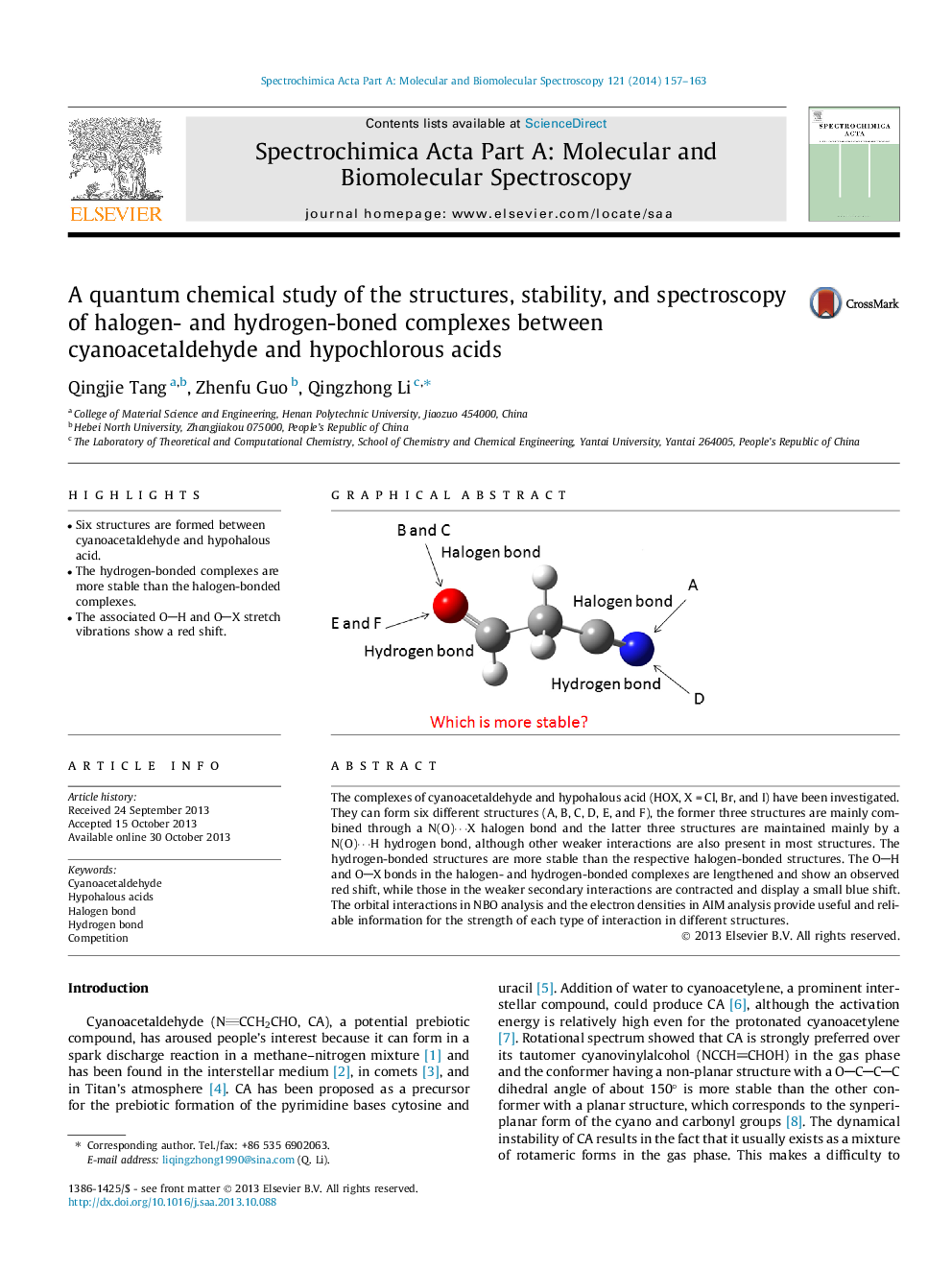| Article ID | Journal | Published Year | Pages | File Type |
|---|---|---|---|---|
| 1230459 | Spectrochimica Acta Part A: Molecular and Biomolecular Spectroscopy | 2014 | 7 Pages |
•Six structures are formed between cyanoacetaldehyde and hypohalous acid.•The hydrogen-bonded complexes are more stable than the halogen-bonded complexes.•The associated OH and OX stretch vibrations show a red shift.
The complexes of cyanoacetaldehyde and hypohalous acid (HOX, X = Cl, Br, and I) have been investigated. They can form six different structures (A, B, C, D, E, and F), the former three structures are mainly combined through a N(O)⋯X halogen bond and the latter three structures are maintained mainly by a N(O)⋯H hydrogen bond, although other weaker interactions are also present in most structures. The hydrogen-bonded structures are more stable than the respective halogen-bonded structures. The OH and OX bonds in the halogen- and hydrogen-bonded complexes are lengthened and show an observed red shift, while those in the weaker secondary interactions are contracted and display a small blue shift. The orbital interactions in NBO analysis and the electron densities in AIM analysis provide useful and reliable information for the strength of each type of interaction in different structures.
Graphical abstractFigure optionsDownload full-size imageDownload as PowerPoint slide
